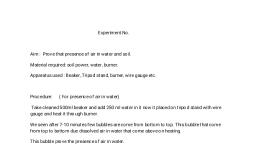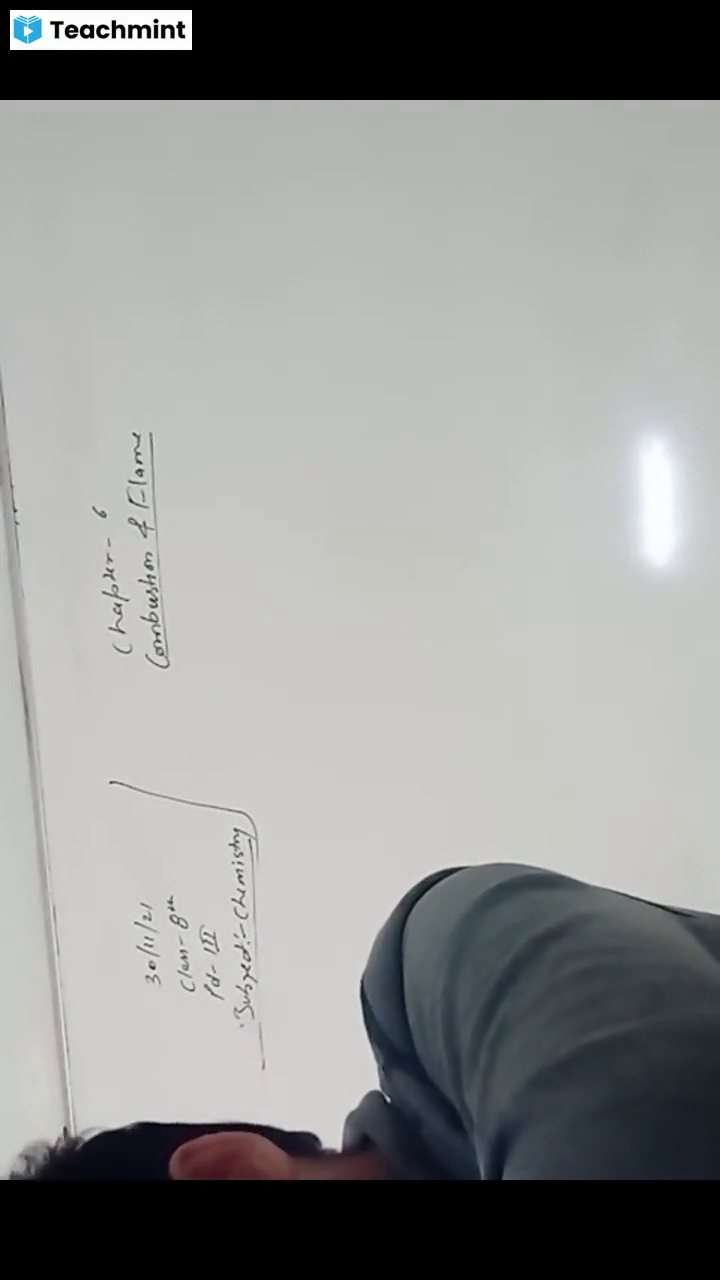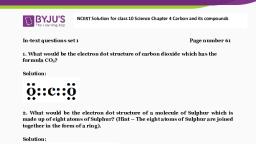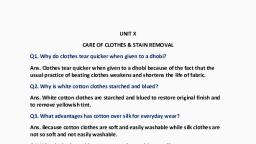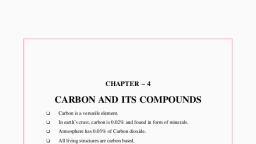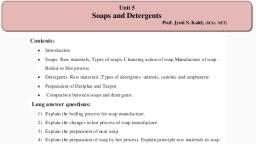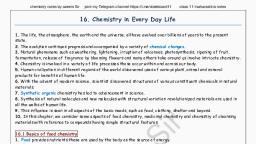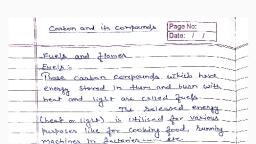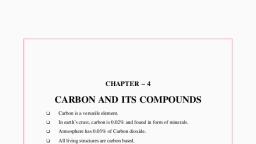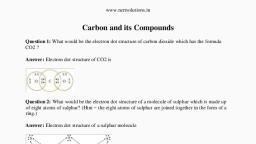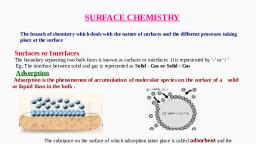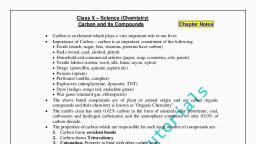Page 1 :
Experiment no., , Our Objective :, To study the comparative cleaning capacity of a sample of soap in soft and hard water, , Apparatus used : beaker, glass rod, conical flask,, , Material required: tap water , industrial region water, soap solution,, , Theory:, , Ordinary water does not remove dirt from clothes or skin because the dirt, present is oily or greasy in nature. Soaps are one of the most commonly, used cleansing agents and are capable of reacting with water to remove, dirt. They are either animal origin or plant in origin., , Chemically, they are water soluble sodium or potassium salts of higher, fatty acids such as stearic acid, palmitic acid or oleic acid. Fatty acids are, found in fats and oils. When fat or oil is treated with alkali such as caustic, soda or caustic potash soap and glycerin are produced., , Oil/Fat+ Alkali —» Soap + Glycerin + Heat
Page 2 :
The soap molecule is generally represented as RCOONa. In solution, it ionizes to form RCOO
Page 3 :
and Na+. Each soap molecule has a polar head group (carboxylate ion, COO- group) and a long, non-polar hydrocarbon tail (R group from long chain fatty acid). The polar head attracts the, polar water molecule and is called hydrophilic end and the non-polar tail attracts the water, insoluble oily or greasy dirt particles., , When a dirty cloth is placed in soap solution, the long non-polar hydrocarbon tail of soap, molecules points towards the oily dirt particles and the polar heads point towards the water., This forms a spherical structure with polar parts of the molecule on the surface and non-polar, parts in the center. This spherical structure is called micelle. This micelle is attracted towards, water and carries the oily dirt particles along with it. This causes the dirt particles to detach, from the fibres of the cloth. In this manner, clothes become free from dirt or dust, , Polarhead, SS Soap molecules (pointing towards, —= water), , x! 2 J _Nonpoter sa, FLY” (pointing towards, , <a ots, , Dirty cloth ny J, Dirt, Direwithin, , Fp seanmicelte, , , , , , , , , micelle
Page 4 :
Other important cleansing agents are synthetic detergents. These are, sodium salts of long chain sulphonic acids and are generally represented, as RSO3Na. The cleansing action of soaps and detergents are same., , Rubbing of clothes with brush or agitation in a washing machine loosens, the bond between the dirt particles and the fibres of clothes. This supports, the cleansing action of soaps and detergents








